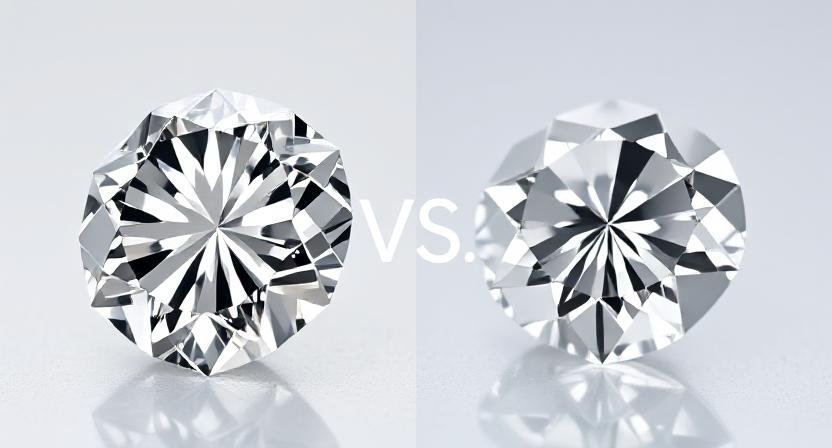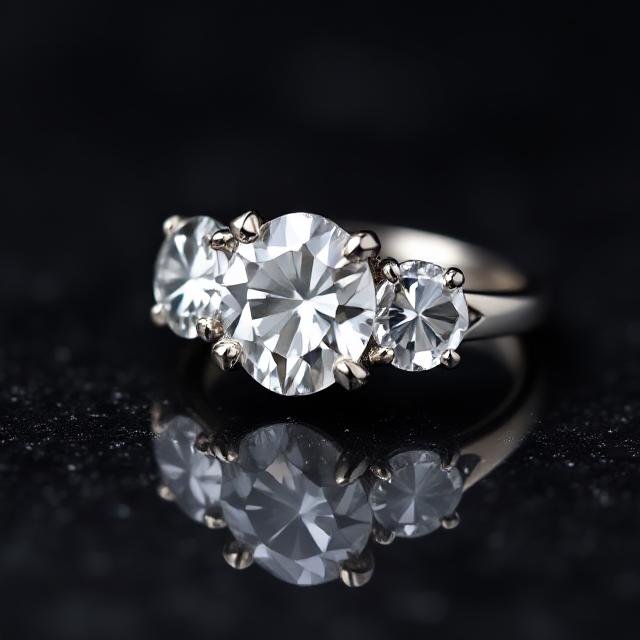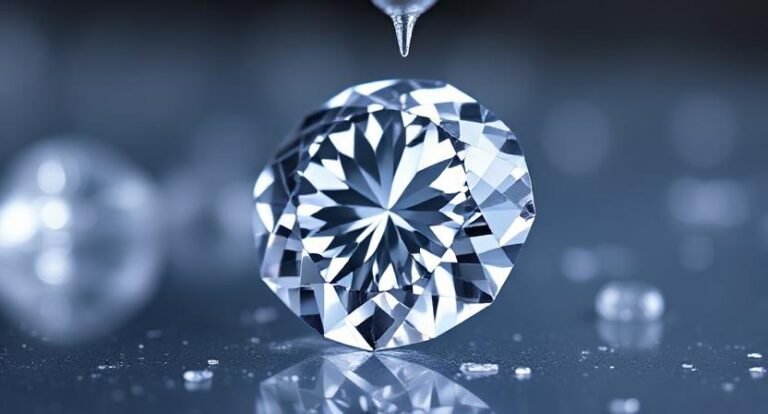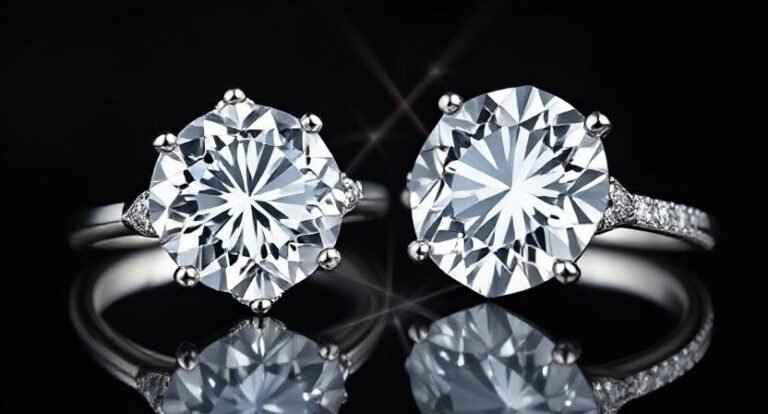Sparkly stones have a way of stopping us in our tracks. They symbolize love, celebration, and life’s unforgettable moments. But when it comes to choosing between moissanite and diamonds, things can get a little… dazzlingly confusing. One has deep roots in the Earth’s crust, the other? It’s literally out of this world. Let’s walk through how these two gems stack up, in sparkle, science, ethics, and price, to help you decide which one’s right for you.
What Exactly Is Moissanite?
Moissanite has a pretty amazing backstory. It was first discovered in 1893 by French chemist Henri Moissan inside a meteor crater. At first, he thought he’d found diamonds, but nope, these crystals were made of silicon carbide, not carbon. Because natural moissanite is super rare, the stones you see in stores today are lab-created. Still, the fact that it originated in space gives it a certain cosmic magic. It’s not every day you wear a gemstone born from stardust.
And What About Diamonds?
Diamonds come from way down deep (the Earth’s mantle), to be exact. They’re formed under intense pressure and heat, and they’re made of pure carbon atoms locked in a super-strong crystal pattern. This is what gives diamonds their legendary hardness and light-catching sparkle. While traditional diamonds are mined, lab-grown diamonds have become really popular in recent years. They offer the same look and feel, minus the environmental baggage.
Let’s Talk Sparkle: Moissanite vs. Diamond
Both of these gems are real showstoppers, but their sparkle is noticeably different. Moissanite actually has a higher refractive index (2.65-2.69) than diamonds (2.42), which means it throws off more rainbow-colored flashes. Think bold, fiery brilliance – kind of like mini fireworks. Diamonds, on the other hand, have a more classic white sparkle, crisp and elegant like candlelight. It all comes down to what kind of dazzle you love most.
Durability: Will It Hold Up?
Here’s the good news: both moissanite and diamonds are tough enough for everyday wear. Diamonds top the Mohs hardness scale at a perfect 10, making them the hardest known natural material. Moissanite isn’t far behind at 9.25. That means it’s still highly resistant to scratching, chipping, or clouding. Whether you’re working with your hands or tossing it in a gym bag, both stones can take the heat — but diamonds have a slight edge in overall hardness.
Color and Clarity: The Subtle Differences
Moissanite can sometimes have a soft yellow or gray tint, especially in larger sizes, though high-end versions are almost colorless. Diamonds are graded from D (pure white) to Z (light yellow), so you can pick exactly what you like. When it comes to clarity, moissanite is usually clearer because it’s made in a controlled lab setting. Natural diamonds often have tiny inclusions (basically Mother Nature’s fingerprints) which some people find charming.
Price Tag: Where’s the Value?
This might be the biggest difference of all. Moissanite is significantly more affordable (often 80-90% less than diamonds of the same size and appearance). If you want a big, sparkly stone without blowing your budget, moissanite makes a lot of sense. Diamonds, meanwhile, carry a higher price tag thanks to their rarity, status, and traditional value.
Eco and Ethical Impact: A Cleaner Conscience
Diamond mining can come with a hefty environmental cost -not to mention human rights concerns in certain parts of the world. Yes, efforts like the Kimberley Process help reduce conflict diamonds, but it’s not foolproof. Moissanite, being lab-created, has a much smaller environmental footprint and is completely conflict-free. Same goes for lab-grown diamonds. If sustainability and ethics matter to you, moissanite is an easy win.
Resale Value: The Long Game
Diamonds tend to hold their value better over time, especially natural, high-quality stones. They’re often passed down as heirlooms or even seen as financial investments. Moissanite, while stunning, doesn’t carry the same long-term value. It’s more of a sentimental or style-driven choice than an investment.
Which One’s Right for You?
This is where personal preference really shines. If tradition, subtle sparkle, and long-term value are important to you, a diamond might be the best fit. If you’re more into affordability, dramatic brilliance, and low-impact living, moissanite could be your new favorite gem. Think about how the piece fits into your lifestyle, what you value most, and of course – what makes your heart skip a beat.
Final Thoughts
Whether you’re drawn to moissanite’s galactic glow or diamond’s timeless elegance, both stones offer something truly special. One is a marvel of nature; the other, a star-born wonder. No matter which you choose, it should reflect your taste, your story, and your values. And that sparkle? It’ll be dazzling either way.




